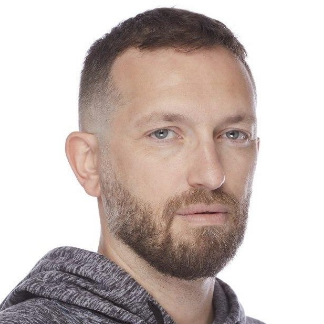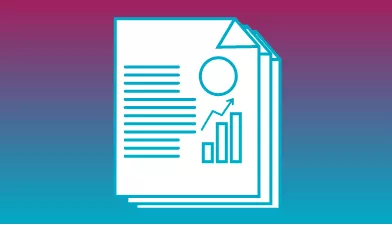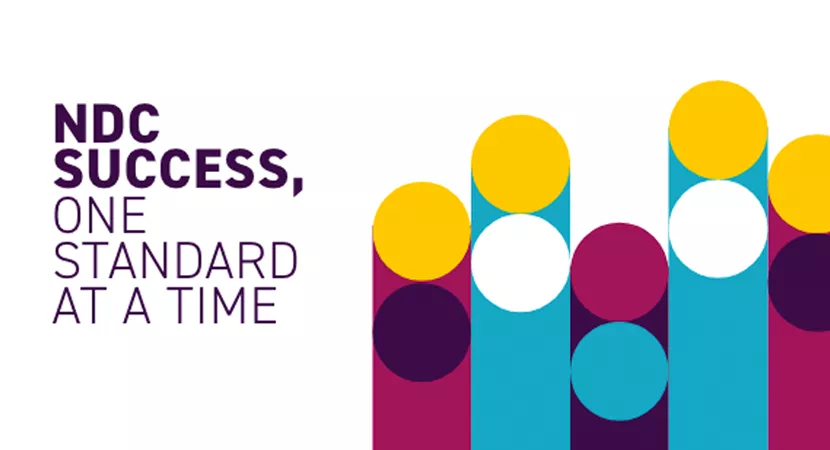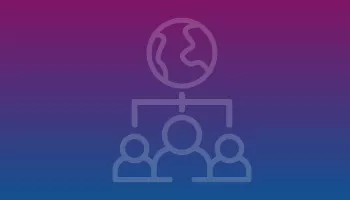On demand | Elevate 2022
Game-changer: Blockchain for dynamic offers @ scale
PANEL • DYNAMIC OFFER CREATION
Blockchain enables never-before-achievable levels of scale, speed, and security—all of which are required for broad adoption of dynamic offers across the industry.
We're breaking down the basics of blockchain’s potential and sharing how ATPCO is testing new theories around infrastructure, standards, and technologies to enable dynamic offers at scale for the whole industry.
Brook: I am Co-CEO and cofounder of Blockskye. We've been talking about blockchain for five years now in this industry, and we moved from hypothetical planning, POCs, into production this summer. We work with major carriers, major buyers. We're on track to move a billion dollars a year through our system, so a little underline that this is a happening-now thing. And I'm excited to get into this with Darie and Boyan around a pain point that we feel like we can think of as offer persistency. So with that, I'd like to address the problem so if you could just cue us up on what's the problem that you guys are trying to solve?
Darie: Absolutely. So hopefully you can see now the diagram on the screen that depicts the model. We all know this is the traditional distribution model, very familiar to us, very simplified image of it. And I want to say that switching to a dynamic model, using the same old orchestration between the fares, the rules, and the availability is bringing big problems that we're all aware of.
And on one side we have fares. That is a huge database. We have right now over 300,000,000 fares in the ATPCO database. And the fares are being updated once an hour at best. On the other side, we have availability data and availability data right now places this dynamic component in this existing model. And this data set is highly fragmented, has multiple layers, it updates in real time. So there's a big challenge when we have to combine these two datasets.
So in order to combine them everyone is trying to use different smart caches and things like that. But the result is a price-driven shopping experience because of that. So we know now that the industry is really aiming to move into an attribute-based shopping experience which basically means separating the product that you're selling from the price tag associated with it.
Brook: I was handed an extra microphone, is this, oh, there we go. All right, hopefully you guys all heard my intro. This is real. It's happening. We're not in POC land anymore, although you guys are going into POC land. It's super fun. You're going to love it. Okay? So lot of pain points there. We all live and breathe and cry over that stuff every day. What about NDC? NDC is focused on a lot of those issues. So how do you think about that in an NDC context?
Darie: It's a great question, Brook. This certainly has changed drastically the distribution landscape. We know that. It also brought a huge technological burden on the airline side. And we know now, after what a decade the tendency has been with us as a technology, that it has issues with scalability. And what the airlines end up doing, they have to contract different technology providers to build their infrastructure needed to serve all these direct NDC requests that that they're getting, and that has a high price tag. And it has a high price tag because the infrastructure building for one airline cannot be reused as is for the next airline. So every airline has to pay this full price tag to build their infrastructure. And airlines do that because they want to have the control of the offer creation, they want to have control of how the offer is being distributed. So it all makes sense. But now if we overlay on top of that the really high look-to-book ratios, sometimes in the tens of thousands to one, the problem is so much bigger. So the only leverage that airlines have right now to control this is controlling the volume of requests that they're getting from the channels. And this unfortunately, it's a lose-lose proposition because you leave money on the table both on the airline side and on the channel side.
Brook: So, my background prior to Blockskye is from TMC. And I don't know if there are any TMC folks in the house, but you know one of the favorite things that we deal with is, I found this price over here, why can't I get it in Concur? And then the other one is where did the price go. I thought that I had the price. I think from my analysis, a typical TMC corporate program, your hit rate is in the 70s. I see some that are optimized really well, in the 90s. But could you hit some notes on offer persistency?
Darie: Absolutely. So everything you said is true and I want to add to that. Offer persistence is also extremely important for the feedback loop on the airline side to be able to adjust their pricing recipe, pricing strategy. So and then down the line into settlement, we talked earlier, I think Tom and Alex talked earlier this morning, about all the problems with the taxes and in settlement. So I know that probably you're very familiar with the settlement issues as well from that.
Brook: Yeah, yeah. What are your thoughts on settlement? How are you guys thinking about that in your paper?
Darie: So I would say maybe to sum up, because I know we're talking about a lot of the shortcomings of the current model for the dynamic world in my mind, there's one big question. Can we somehow separate the control of this secret recipe used for creating the offer from the infrastructure that is necessary to run that recipe. So in other words, can the airlines keep the control of the offer creation and that magic sauce or magic recipe? And at the same time not have to pay that full price tag for the computational infrastructure needed to create the offer. And I know it may sound very utopic what we're saying here, but we believe at ATPCO that it is possible and that it would tremendously help both NDC and dynamic offer creation.
Brook: I mean, for me, when I heard these words and when I first really learned about what ATPCO does is that it’s a necessity to have some opacity in the market that you can't facilitate this global multi point of sale market with so many carriers, so many fares and so many shopping requests every second without some opacity. And I think the way that you guys are thinking about that is totally fresh. In terms of this idea that there's work that an individual carrier is doing or that the industry is doing collectively how do you consider that in your paper?
Darie: In the current reality, every airline is trying to build now their own vision of the dynamic pricing and the dynamic model and we believe that without a common effort the progress is very slow, so I'm wondering what would it take now for the whole industry to really come together and build this next generation computational platform distribution platform that will eventually hopefully act as a force multiplier to all the participants.
Brook: Amen. It’s going to take a little while, but I'm rooting for you inside. Okay, so let's get into the proposal. Clear blue sky, what do you guys see?
Darie: I think the probably the new model that we're proposing, a very simplified diagram here. And what we're technically proposing is on the left side of this diagram. Basically, our proposal is a new layer.
What you see there on the left, that is a decentralized network based on blockchain technology. And we believe that blockchain as a technology is a key enabler to reach this goal of separating the control of the recipe that is used from the infrastructure necessary to run that recipe. So technically what we're exploring here is the creation of a completely distributed computational platform, we call it at ATPCO right now, the Next Generation Distribution Network. And this network could become hopefully the dynamic layer necessary on top of the existing model, and this dynamic layer will augment the existing distribution model, hopefully without disturbing the existing systems and the existing infrastructure out there.
Brook: So my next cue here is to hit three key points about blockchain. I'm going to go a little off script. So excuse me, I'm sorry.
So I think we've all been hearing about and reading about blockchain for years. Everything from Bitcoin. It comes up on conferences. I think the themes that I'm hearing here, and you know how I explain this to my friends and family members, is that there are certain activities that are not in themselves economically productive. There's this velocity of money argument that originally people bartered, then they had a medium of exchange with gold, then Romans invented fiat currency, then you have private issue currency in IOUs, credit cards, ACH, Swift, et cetera. You know, if Delta had to start bartering with carrots tomorrow their sales would go off a cliff. So the idea is that every time you sort of speed up the velocity of money that you unlock productivity, that there are human actions maintaining ledgers, maintaining architectures individually as airlines that are not economically productive and that moving past them, we all get to do better, more productive things. I think broadly speaking, this is what I'm hearing you're talking about a network. It's a problem that I think about a lot obviously.
So to just bring it back here. The key themes are what are the actions that are not economically productive that can be done by a network or just hardware code? And for us, just as a business we use SaaS companies all over because we don't need to do those things, like I don't need to schedule meetings, Clockwise can schedule them. It's a similar theme here and I think that's what we're talking about. You're saying what is the network doing versus what are the individual actors? So those are, that's my three hits, maybe it was four or five, but Darie, thank you. I want to transition out to Boyan. And if you just pick up there and share your thoughts.
Boyan: Yeah, just as Darie said, I want to emphasize that it's a net new layer. It's not going to disturb what the industry has already built and we have a lot. And to rather augment current distribution models. And I see this model, this new layer initially implemented by early adopters and industry innovators. And then as it proves its capability to bring our industry to a new era of dynamic offers and personalized retailing, more and more industry players will join, and at some point it will become the de facto integration layer of the distribution workflow. And the current model will refocus on what Tom mentioned earlier, on the attributes and the result is shifting to this attribute-based shopping.
Brook: I'm an adventurer. Can everybody hear in the back? You're going to hate me now, but you love me later. I'm going to ask you to speak up for the next one. We can get a drink and work it out. Okay, key word there, network. How are you thinking about network?
Boyan: Yeah, and since blockchain is a distributed state machine, which guarantees the data consistency and validity for all participants. But we want to go further. We want to use this network, the nodes of the network, for computation of the data we are distributing across it. In the traditional model in our current state, it's already a very complex web of hubs and participants playing different roles for different cases.
Well, the difference in the blockchain is that connections are peer-to-peer. Which shortens the distance between participants, in this case between airlines and channels. Which translates to faster communications, lower network traffic, more accurate computations because we envision instead transferring some queries between airlines and channels, airlines to be able to distribute their secret recipe. So channels will be able to call their local nodes, which is much faster and return to the airlines only feedback loop. And because it's more like a round table where all the participants are equal, so they can exchange data much more quickly. So it's not only that the channels are getting faster and more accurate data, but also the airlines are receiving real-time feedback.
Brook: Okay. I'm going to retell that in my world because I followed you. I think probably 30 people or 70 people followed you. And that's the paper. That is the paper, everybody. So read the paper.
I think of this as a single version of the truth problem. And in the TMC context, there is the agency mid office. There's the agency back office. There's whatever the credit card company thinks was sold or whatever IATA has or whatever ARC has, or whatever. The traveler has their confirmation e-mail, there's whatever is in the expense system. All of these things are different and we all run around and go, ah, I'm sorry your expense report wasn't filed on time. I'm sorry that the global reporting program is only 87% accurate on a global level after we wrote everything up from various GDSs. We live in my world with that problem. It's just de facto, we just soldier on. If you try to address that problem, which we do, you find out that it becomes a hardware and software approach question. You start asking yourselves questions like Boyan is vocalizing here. So read the paper and get into the hardware, because it is about the machines, where they do the computing and how they talk to each other.
But in this world, where's pricing happening? I'll refer again to the current world. Shopping is already a very complex process. It's not possible to provide all possible solutions because there are many billions, constantly changing. That's why it's delivered in the form of ingredients. And some of those ingredients have a price tag. So the pricing is inevitably going through this, reassembling these ingredients, to have the final price, which is requiring a lot of computation. But, what we propose is to, the pricing, to have it separate. Much more powerful rule system which will be able to handle all many more input parameters. And it will be also distributed, which means the pricing will happen on the nodes. The channels will not need to ask airline for each pricing, but they will be able to calculate it locally. Which fixes one of the biggest problems of look-to-book ratio. It can go up to million to one without changing the picture.
Brook: Okay. There's a lot to digest here, but I think we've got a helpful slide that's going to cue up some of the key takeaways here. Or maybe not. We've got a QR code. Okay, Susan, this is your cue. Three beats. We're moving on.
Okay, so let's talk about blockchain just in general, and specifically the decentralization. Why is that? Why is that so critical to your solution here?
Boyan: Well, it's so critical because in the existing world there are trusted entities like ATPCO who play the role of hubs. Well, and middlemen. But in the blockchain world, there is no middleman, there is consensus algorithm. So these trusted entities will play a different role. Instead of controlling data and distributing data, they will govern the network and facilitate the infrastructure. And decentralization is very important because I've already mentioned about the computation. It's not happening in one place, it's distributed in a very fair way, which means the channels who want to consume more offers will just need to provision more hardware to do it on their side which will become a decentralized computational platform.
And security, which is very important when you have all competitors in a single network. In the current world we have data control structures on different levels, which puts a lot of burden on the distribution and on the computation side, while in a blockchain network, the security is embedded into the fabric of the software, into the infrastructure. So it simplifies a lot of the problem.
Brook: So these are big ideas. Again, they're ones close to my heart and hopefully close to some people's hearts out here. Or will be soon.
One of the things that I love about the airline industry is that airlines compete so fiercely with each other and then also cooperate, whether it's for protection agreements, regulatory issues going to the Hill, or cooperating through ATPCO, IATA, ARC, UATP, et cetera. And of all of the cooperators, I think you guys sit in a very interesting space because it's pricing, it's this balance between opacity and transparency. But as we look out as an industry, every day an airline has to feed people, keep them safe, clean the seats, be a marketing and lifestyle brand, operate lounges. An airline is actually a roll up of 36 different extremely complicated businesses. And in that context, I think it's super challenging to innovate. Do you build a new lounge? Do you have new routes? Do you get rid of your aircraft? And I, the airlines that we work closely with, I see them struggle too, and succeed and win at innovating every day. And I root them on and I'm very passionate about it. But in terms of ATPCO and how you guys think about innovation, and you're planting something very future-forward here with this problem or this solution. But when you think about this problem, are there other approaches that you guys are also thinking about?
Darie: Yeah. I'll take that one. I can be honest that even inside ATPCO we're debating the blockchain as a solution. And I think Tom mentioned in the opening here that we do have the Dynamic Offer Design Team and this design team is exploring multiple ways to help us transition into the dynamic world. And we know that it's going to be a gradual transition. That's without doubt. It's not going to be overnight. It's going to be a gradual process.
So from that perspective, the way I like to look at it is that in order to be bold and make this transition, first, we need to look at our toes, right? We need to see, okay, what is the next step? And that next step is something that ATPCO is already working on, which is adapting our standards, expanding our standards, making sure that we are covering for all these new scenarios that the new world is bringing in, right? So that's our toes. Then we need to look further a little bit out and say, okay, what is the next milestone, where are we headed here and this is where the key industry partners together with ATPCO under actually the umbrella of the IATA think tank has explored caching solutions. I think there's a code named Project Robot and then Project Robot 2, the next incarnation of it, some of you may be familiar with it. And this project is exploring the creation of smart caches that then can be improved over time through machine learning. And that really solves a bunch of problems that we're having. But again, it's not a full solution, it takes us to the next level. So here what we're exploring is more of like, if we look at the horizon, if we look at the North Star, where can we head, where could we dream to head, how this might look like when we are fully scaled, when we're really having personalized offers. And that is where I think we're trying to be bold and to challenge the industry to think about technologies like blockchain that can bring us into that future.
Brook: I love it. Where do we go to learn more?
Darie: Well, like we said in the beginning, we have a white paper. Boyan here is the author and the mastermind of that white paper that should come out hopefully in the next month or so. You can use this QR code that you see up on the screen and leave your information. If you leave your e-mail, you'll get notified when we publish the white paper, so you can actually dive deeper and get some of these details we're talking about.
Second, if you are not part of the Dynamic Offer Design Team, it is an open forum anyone can join. Please approach us and make sure that you're coming to the table. That's how you can make an impact for sure, right?
And third, I would say just approach us. We are around here, any of us we will love, all three of us are passionate about blockchain and this technology. If you're interested, just approach us and let's have a conversation.
Brook: Last line here on the notes is Brook closing out the session. So I'm going to close it out. Thank you very much. I really appreciate it.
And I would just say to the audience that coming from the agency side and the large corporate buyer side, we are seeing large corporate buyers change the way they buy travel. We're coming out of a period where the travel manager went to GBTA and signed some contracts and everything came back. Now we're seeing procurement, treasury, finance, CFOs start asking, this is a huge T&E line item. What's going on? How is this happening? What's the story here? What are our travel frustrations? So we're seeing a bunch of large buyers take on sort of generational questions here. I think we're all thinking about generational questions, but I think planting a flag and North Star is entirely appropriate. You've got to have smart caching and things that come probably faster, but there does need to be a direction and I'll say from the corporate buyer side and the TMC side, we're really feeling that and always happy to work with carriers and ATPCO who have similar lines of sight. So thank you.
Darie: Thank you.
An event experience you can't miss
ATPCO's Elevate + ARC's TravelConnect
Speakers

Brook Armstrong
Co-CEO and Co-Founder, Blockskye
Brook has ten years of travel industry experience working in corporate travel, and nineteen years of experience with startups and venture capital. Along with the other travel industry veterans on the Blockskye team, Brook is passionate about bringing real-word applications of blockchain technology to air travel, corporate buyers, and the travel industry in general in order to help solve long standing frictions, lower costs, and upgrade the market. Brook holds a BA from Columbia University.

Darie Dreptate
Director, Product, ATPCO
Darie is leading the Routehappy and Merchandising product portfolio at ATPCO. He has a vast experience in lean product development and is obsessively aiming to decrease time to value. He is passionate about Web3 potential and how it can transform the airline industry.

Boyan Hristov
Solutions Architect, ATPCO
Boyan wears the hat of chief architect and technology leader for ATPCO’s retailing and Routehappy product portfolio. He is responsible for all decisions regarding how we build our products, as well as their performance, scalability, and overall quality. He also provides mentorship and coaching for the engineering practice.
You might also like



